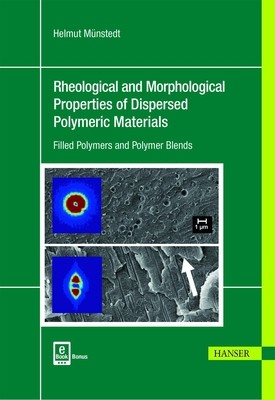
- We will send in 10–14 business days.
- Author: Helmut Münstedt
- Publisher: Hanser Publications
- Year: 2016
- Pages: 474
- ISBN-10: 1569906076
- ISBN-13: 9781569906071
- Format: 17 x 24.1 x 2.5 cm, kieti viršeliai
- Language: English
- SAVE -10% with code: EXTRA
Rheological and Morphological Properties of Dispersed Polymeric Materials (e-book) (used book) | bookbook.eu
Reviews
Description
The rheology of polymer melts plays an important role today in industry and academia. Although several textbooks on this subject are available, with very few exceptions they cover homogeneous products only. This book is unique in that it focuses on heterogeneous systems such as particle-filled materials and polymer blends, which are highly important in the world market. It deals with similarities and differences of the flow properties of these two classes of material, providing both a fundamental and a practical understanding. Key points of the book are the viscous and elastic properties of engineering polymers filled with functional particles and the influence of nanoparticles on rheological properties. Two key aspects of rheological measurements are discussed: the influence of heterogeneous structures on the flow of materials important for processing and the use of rheological means to get an insight into morphological features. Both approaches are applied to particle-filled melts and to polymer blends. In the latter case it is shown in detail in which way the deformation of droplets formed by the dispersed phase can be affected by outer deformation, particularly in elongation.
EXTRA 10 % discount with code: EXTRA
The promotion ends in 23d.09:07:15
The discount code is valid when purchasing from 10 €. Discounts do not stack.
- Author: Helmut Münstedt
- Publisher: Hanser Publications
- Year: 2016
- Pages: 474
- ISBN-10: 1569906076
- ISBN-13: 9781569906071
- Format: 17 x 24.1 x 2.5 cm, kieti viršeliai
- Language: English English
The rheology of polymer melts plays an important role today in industry and academia. Although several textbooks on this subject are available, with very few exceptions they cover homogeneous products only. This book is unique in that it focuses on heterogeneous systems such as particle-filled materials and polymer blends, which are highly important in the world market. It deals with similarities and differences of the flow properties of these two classes of material, providing both a fundamental and a practical understanding. Key points of the book are the viscous and elastic properties of engineering polymers filled with functional particles and the influence of nanoparticles on rheological properties. Two key aspects of rheological measurements are discussed: the influence of heterogeneous structures on the flow of materials important for processing and the use of rheological means to get an insight into morphological features. Both approaches are applied to particle-filled melts and to polymer blends. In the latter case it is shown in detail in which way the deformation of droplets formed by the dispersed phase can be affected by outer deformation, particularly in elongation.


Reviews